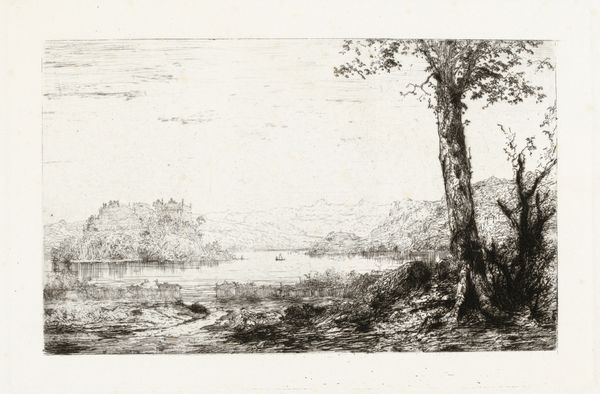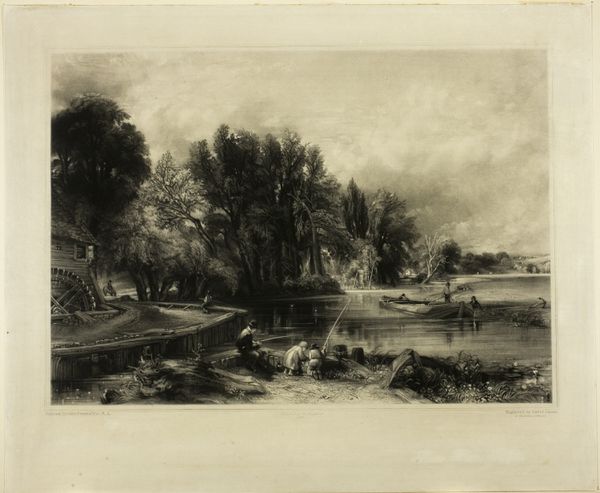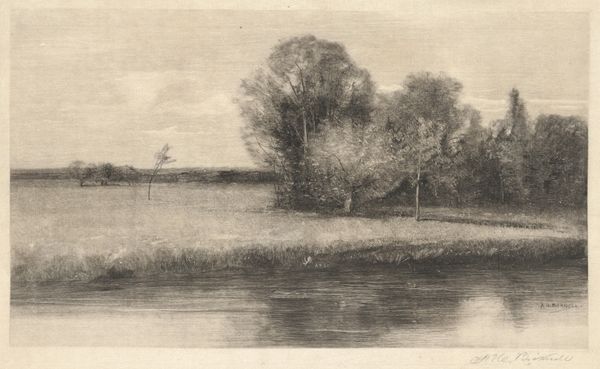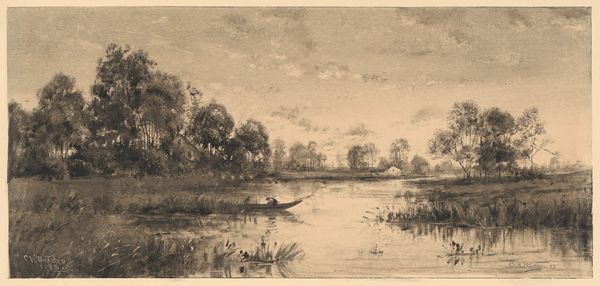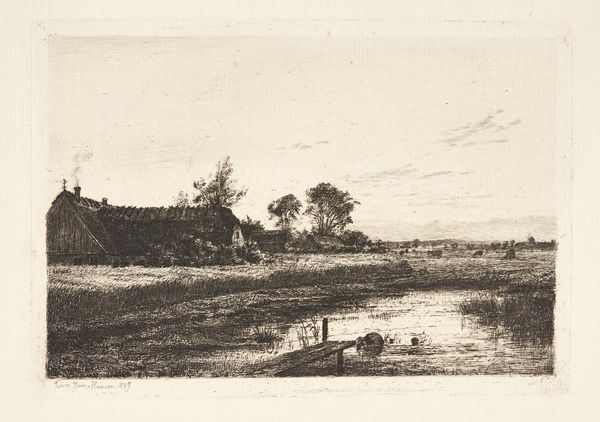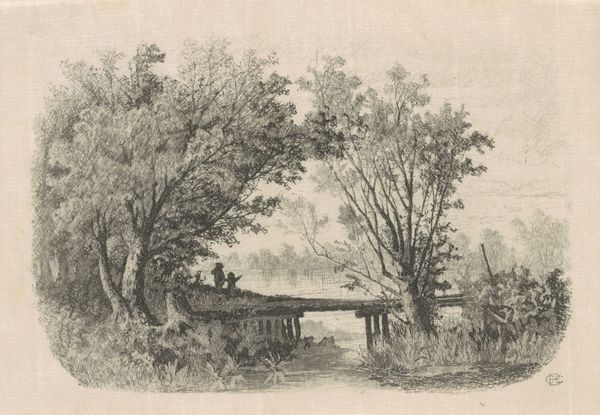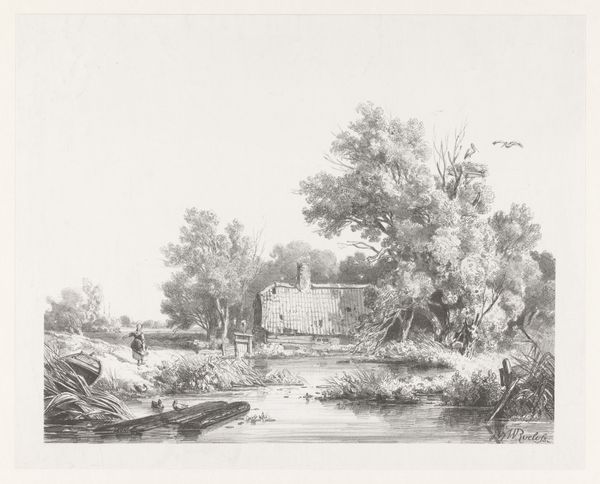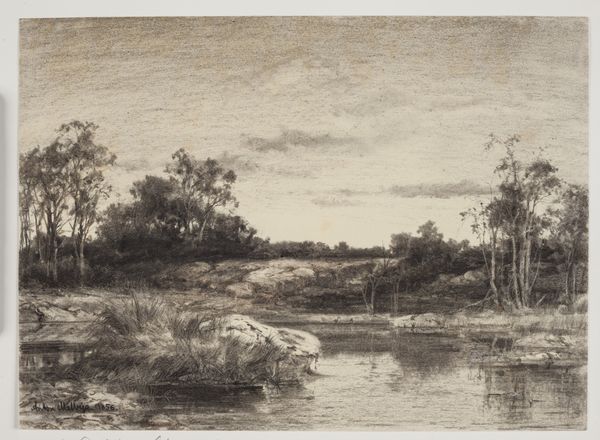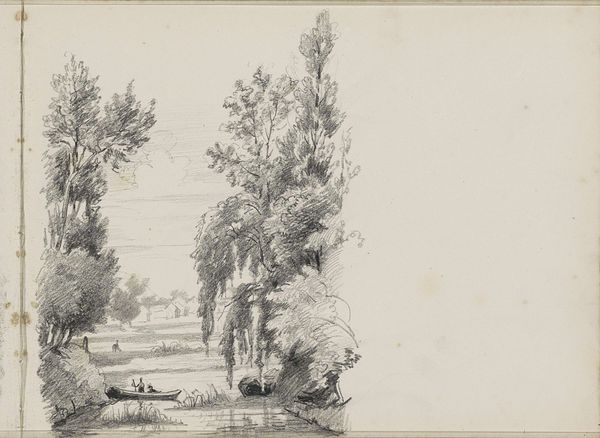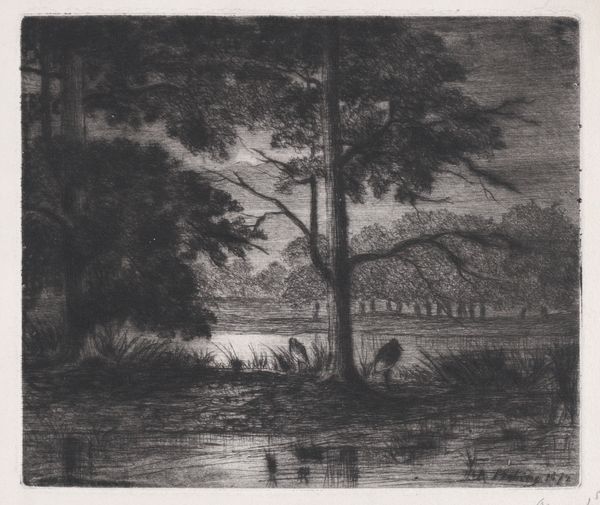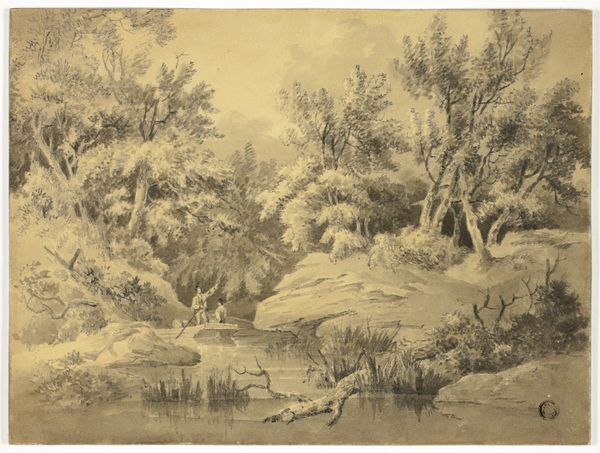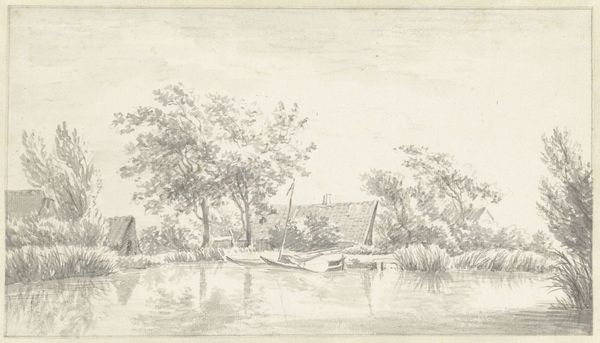
painting, wood
#
dutch-golden-age
#
painting
#
countryside
#
landscape
#
monochrome photography
#
fog
#
wood
#
monochrome
#
realism
#
monochrome
Dimensions: 34 cm (height) x 51 cm (width) (Netto)
Editor: This is Salomon van Ruysdael’s “River Scenery,” painted in 1634. It’s currently housed at the SMK in Copenhagen. I find it strikingly serene; its monochromatic palette and misty atmosphere really evoke a sense of tranquility. What do you see in this piece, considering its historical context? Curator: It’s more than just serenity; it’s a potent reflection on Dutch identity and the socio-economic landscape of the 17th century. The Dutch Golden Age witnessed an unprecedented rise in maritime power and trade. This monochrome work on wood can be viewed through the lens of emerging Dutch capitalism and its impact on the landscape and local labor. Notice how the river isn’t merely a backdrop but rather a conduit of trade, visualized from what class perspective? Editor: A working-class one, maybe? Someone whose life depends on the river's resources? Curator: Precisely. And consider the environmental cost often omitted from heroic narratives of progress. This quiet scene hints at a complex relationship between humans and nature, an exploitation veiled as bucolic charm. How does knowing it is oil paint change your view? Editor: I hadn't thought of that. Using oil paints for landscapes romanticizes them; I tend to view art as outside of political events but maybe this idyllic landscape depicts and distracts from worker's harsh lives. Curator: It invites us to question the visual rhetoric employed to celebrate Dutch prosperity while simultaneously masking the less savory aspects of its economic dominance. Editor: I never looked at landscape paintings that way. It's given me a lot to think about regarding whose stories get told and how. Curator: Indeed. Art is never neutral; it’s always embedded within broader power structures and discourses. Approaching artworks this way lets us uncover a network of intersectional concerns such as labor, class, identity, and power.
Comments
No comments
Be the first to comment and join the conversation on the ultimate creative platform.

